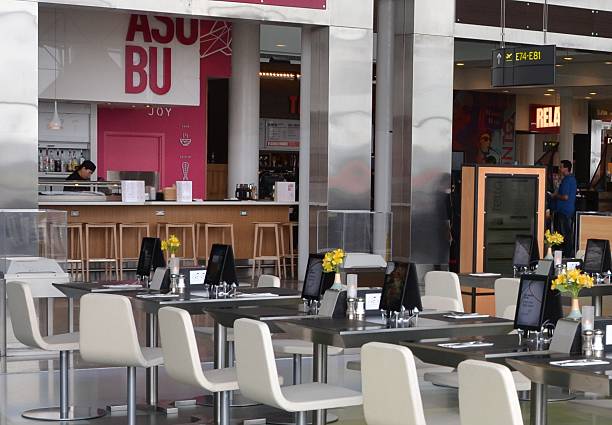Chef Dave Chang, based in the United States, tweeted on April 16: “Can diners from Taipei or Hong Kong send me pictures of how it looks in restaurants?” The replies poured in with photos of restaurants that had plastic sheets, tape, and cardboard dividers between diners. These solutions were not the most appealing, but they worked.
The dining experience will never be the same. By strictly adhering to safety regulations, many restaurants have regained the trust of their customers. Some restaurants are taking it a step further by installing a design that creates a memorable and unique dining experience.
In China, a government app indicates the health status of a person by using a color-code system: green, yellow, or red. Restaurants and cafes increasingly ask customers to display their color codes. Originally, this was a tool for travelers.
In April, Yardbird Hong Kong reopened using plexiglass partitions between booths. Parties were limited to four people maximum, and surfaces were sanitized every 30 minutes. Lindsay Jang is the co-founder of Yardbird Hong Kong. She notes that “energy” has changed in the restaurant, but she thinks people are appreciating the boundaries set up to make them feel safe.
Amsterdam’s restaurant has changed its dining setup to make it more intimate, safe, and atmospheric. Mediamatic ETEN installed Serres Separees along the waterfront to solve the problem of distanced dining. Bookings released for the week of May 21 and for June are all fully booked.
Denmark is soon to announce the second round of openings, which may include cafes and restaurants in mid-May. Some restaurants, however, are taking their time to rethink the business and not rush into space immediately.
Noma announced that they would delay the opening of their restaurant until the latest June 2. Rene Redzepi, co-owner and chef of Noma, told Vanity Fair that the restaurant will rethink what customers will want when dining out. Redzepi says that “no one dreams of spending five hours eating a ten-course meal.” “We dream of going out with friends and ordering two bottles champagne and a large platter of shellfish.”
Restaurants and cafes also use this time to reevaluate business plans as consumers reconsider their priorities after a lockdown. In an article published by The Guardian in April titled “Restaurants won’t be the same after the coronavirus – but that could be a good idea,” author Jonathan Nunn describes the flaws of the industry, from the struggle to break even due to excessive rental to the unethical use of cheap labor. Nunn says, “To move forward, we need to start by examining the things we want to save from the industry. We should give space to the things that nourish us, our communities and throw out the things we don’t think deserve to live.”
The lockdown has allowed restaurants to reflect. The situation with restaurants closing is dire. However, those who are able to survive and thrive will bring a new approach to dining and add value and purpose to the community.


